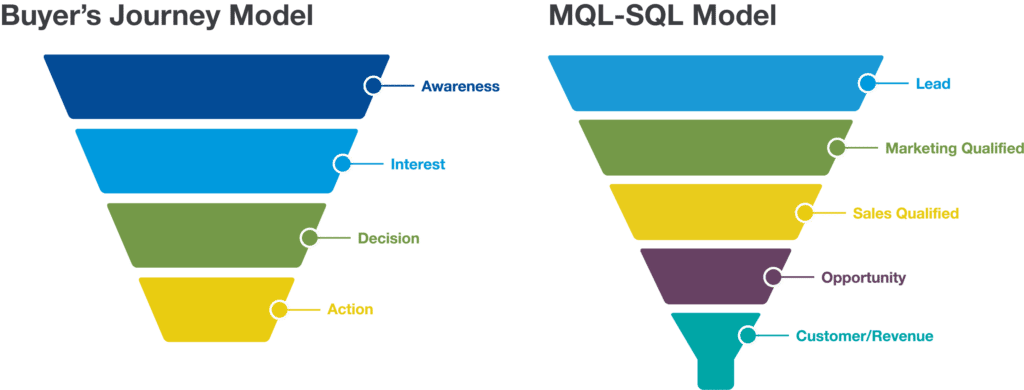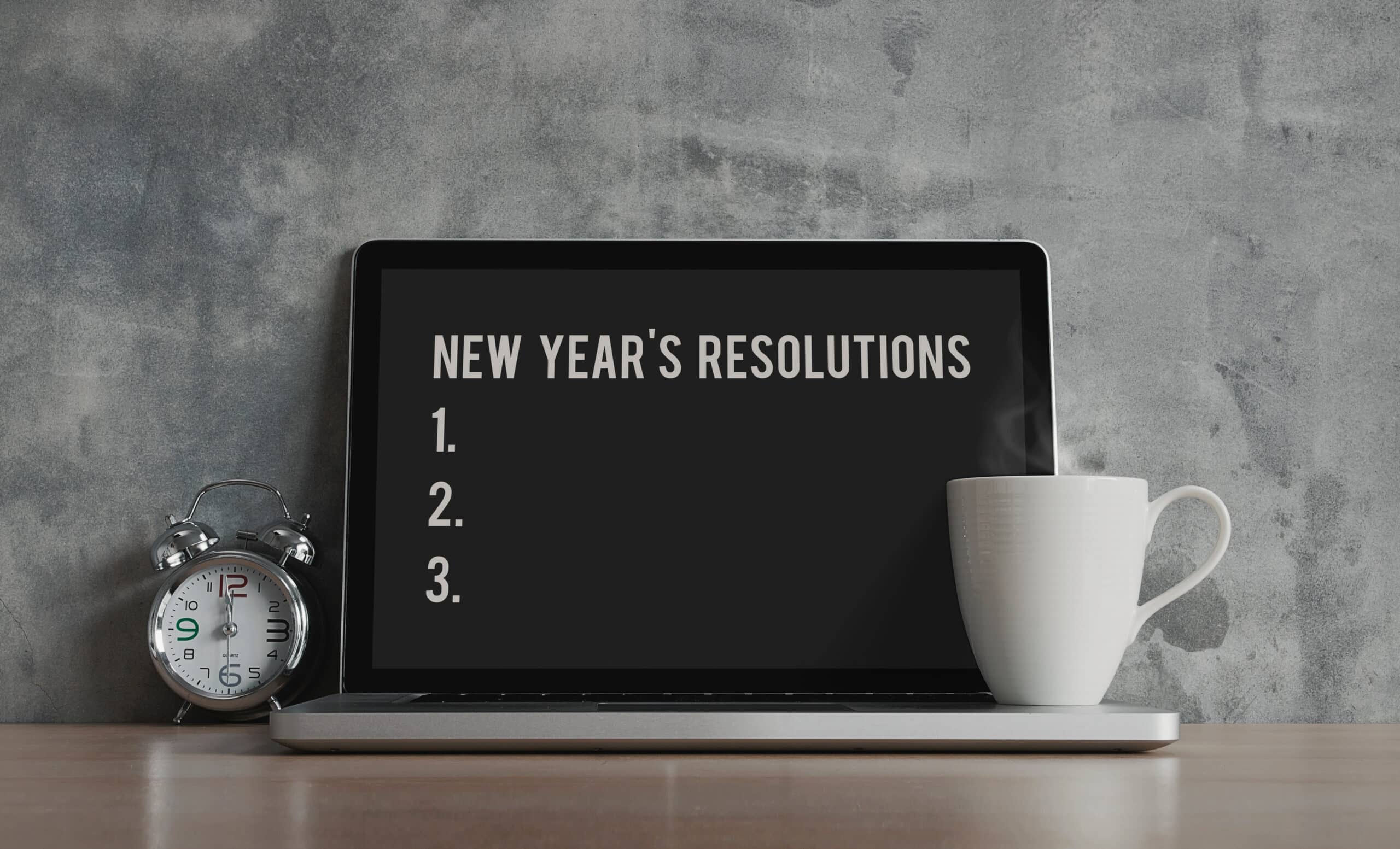At any given time, a salesperson somewhere is probably talking about trying to grow their pipeline. Why? Because a sales pipeline represents the total dollar value of potential deals that could result in revenue for the business. This number, in turn, helps salespeople and sales managers understand whether or not they’re prepared to hit their quotas. So it’s pretty important.
What’s often missed, however, is the connection between a pipeline and the organization’s sales process, specifically — how having the right sales process can actually help to make sales and revenue forecasts much more accurate, in addition to helping salespeople win more deals.
Traditionally, pipelines are represented as funnels, and for good reason: most organizations will have more people interested in their products and services than actually end up purchasing them.
For example, we have the Buyer’s Journey Model, and the MQL-SQL Model:

What makes the pipelines above compelling, however, isn’t merely understanding that prospects are moving through a process, but rather actually measuring the rates at which those potential customers go through each stage — and understanding the factors that influence their decision to move forward or not.
Pipeline conversion rates
Conversion rates are a key metric that can not only help an organization determine its overall win rate for deals and produce a forecast, but it can also help sales managers identify gaps or areas of improvement in their sales process. And it can help salespeople on the ground identify areas they can work on to improve their own personal win rate. Finally, it helps answer a common CRM configuration question: “What should the Probability be for each particular Opportunity Stage?”
Silverline is well-versed in complex reporting such as conversion rates by opportunity stage, and while there are many third-party applications and tools on the AppExchange that can help with this, there are native reporting capabilities we can leverage as well, such as complex formulas, to get the results you need using the tools you already have.
Why does measuring stage conversions and having a predictable funnel matter? It’s important to consider:
- Conversion metrics are a standard method of measuring the effectiveness of a Sales process, Sales teams, and individual Sales representatives
- The funnel paradigm makes the Sales representative’s job clear: Convert
- The funnel paradigm makes the Marketing and Sales/Business Development representatives’ jobs clear: Attract qualified leads
- A funnel is an accurate representation of how people and businesses actually make purchasing decisions at the most basic level
- So long as the stages are accurate representations, having conversion metrics empowers you to experiment with process and innovation while measuring its impact
- Accurate conversion rate metrics enable an organization to predict sales and revenue (i.e. Forecasting)
What’s in it for you?
Analyzing your data in the context of your business can lead to many interesting insights you can leverage to improve your sales process and your organization’s success. For example:
- Opportunities are not consistently progressing in order from one stage to the next
- Stages are being mixed with internal statuses that don’t necessarily move the customer through their buying journey
- Win rate is very high for “existing” business versus “new” business but the sales process and forecasts don’t account for them separately
- Stages do not accurately represent the way your customers actually make buying decisions
- It’s not really possible to accurately forecast deals that will close, and by extension, revenue for the organization
- “New” and “Existing” exist under the same record type
- Stages such as “On Hold” are used as a parking lot but the deals are often forgotten
What are some sales process best practices?
There are many methods that may help to improve your sales process, and our managed services teams are well-versed in them all. We can help you figure out what best suits your needs with a variety of choices, such as:
Ensure Linear Stage Progression
Enforce linear stage progression by introducing validation rules and automation to handle stage transitions so that your:
- Funnel behaves like a funnel, representing your potential customers’ progression through the pipe
- Stages and probabilities mean the same thing to each individual sales rep (i.e. removes the guess-work)
- Forecasts are more precise
Quarterly Conversion Metrics Review
Report on and review conversion rates on a quarterly basis in order to monitor trends so that you can:
- Start to identify changes to market trends quarter-over-quarter and year-over-year
- Measure the effectiveness of your marketing and sales initiatives (e.g. campaign ROI)
- Adjust your stage probabilities to represent reality in order to better predict future sales and revenue
- Find new and innovative ways to influence conversion rates and measure the impact of those initiatives
Weekly Sales Team Pipeline Reviews
Create team and individual pipeline reports and dashboards, and conduct weekly pipeline reviews with sales teams and individuals so that your:
- Teams and team members know where they stand and what the delta is between where they’re at and where they need to be with respect to their pipeline and their quotas
- Managers can mentor individuals based on their individual performance metrics
- Managers can identify pipeline shortages or gaps versus sales/revenue targets and adjust early
- Pipeline data can be socialized quickly and easily, as needed
Forecast Reports and Dashboards
Create forecast reports by bucketing opportunities by stage/probability and multiply probability X amount totals to produce aggregated sales estimates so that:
- The organization can accurately predict its revenue over time
- The organization can track its actual revenue versus forecasted revenue in order to find slippage/revenue leakage and opportunities for improvement
- Individual sales reps can predict whether or not they will hit their goal with the pipeline they’ve built
How Silverline can help
Silverline lives and breathes Salesforce every day — so you don’t have to. Through our managed services offering, we can partner with you to implement tailored solutions based on the recommendations and best practices outlined above.
With our help, you can finally stop talking about growing your pipeline — because you’ll have the time and tools to actually do it.
Ready to hit your quotas and then some? Contact us for pipeline peace of mind.




